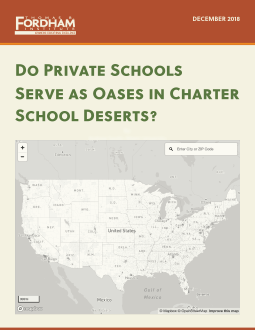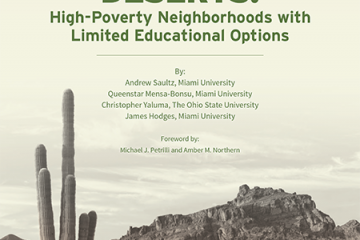Last April, we published a report by Andrew Saultz and colleagues highlighting “charter school deserts” across the country, or high poverty areas that lack charter schools. The report was accompanied by an interactive website that enables users to look at every neighborhood in the country, including its population, poverty level, and data for every public school serving students who live there.
We’ve now updated the map to include private schools, many of which offer a critical additional option for disadvantaged students in some areas that need them the most. Users can now identify every public school – both traditional and charter – as well as the vast majority of private schools in their neighborhoods. The good news is that some private schools are located in charter school deserts, opening opportunities for low-income communities not served by public options. Specifically, we find that voucher and tax-credit scholarship programs sometimes serve as private school oases in the charter school deserts originally identified in our map.
Of course the mere existence of private schools does not guarantee access. But in cities such as Atlanta, Jacksonville, and Los Angeles, we see that some private schools are located in charter school deserts. And in cities like Milwaukee, voucher programs appear to be increasing choices for students in high-poverty areas by sustaining existing private schools and enabling new ones to open in the neighborhoods that need them the most.
Explore the updated interactive map here and related blog post here. Read more about our nation’s charter school deserts here.



